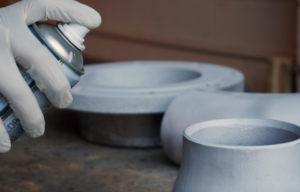Duplex Stainless Steel pipes are strong, rust resistant and when compared to piping made from other high alloy materials, they are much more cost-effective. Duplex Stainless Steel has a two-phase microstructure made up of around half austenite and half ferrite. This is why this type of piping material has such strength and corrosion resistant properties. However, care needs to be taken when welding Duplex Stainless Steel pipes since the composition of the material from which they are made of is completely different to that of austenite steel or carbon. Pitting corrosion could occur along with other defects if the weld isn’t consistent with a ferrite content of 30 – 70 percent
How to avoid pitting corrosion
If pitting corrosion is to be avoided there has to be sufficient nickel in the weld to stabilise the austenite because if there isn’t, the ferrite content will be too high and may result in lower rust resistance and ductility.
The cooling rate can also impact corrosion resistance. Duplex steels solidify primarily to ferrite, but when the temperature lowers, austenite is formed in the ferrite matrix. How much austenite is formed depends on the cooling rate and the level of austenite stabilizers existing in the weld.
A cooling rate that is too high reduces pitting corrosion resistance in multilayer welds. This is a result of the formation of what is known as “secondary austenite,” created when a weld pass is reheated by a subsequent pass. The secondary austenite is lower in molybdenum and nitrogen than the surrounding material, which significantly lowers the local corrosion resistance.
Equally important is the nitrogen content. Nitrogen will stabilise the austenite in the same way as nickel does, hence if it is too low, secondary austenite may form in weld metal when reheated.
Therefore, to reduce the risk of impaired mechanical and corrosion properties when welding Duplex Stainless Steel pipes, always use a consumable that is over-alloyed in nickel compared to the parent material. Also, make sure that you have the right heat input since that affects the cooling rate and the formation of secondary austenite. To limit the risk for nitrogen losses, a back-purge gas containing nitrogen is recommended.
When TIG welding, it is recommended that the shielding gas contains 2% nitrogen; this may also be considered for MIG and PAW, depending on the parent material grade. Make just sure not to over-saturate the weld with nitrogen, as this can lead to porosity.
Source: www.duplex-world.com
